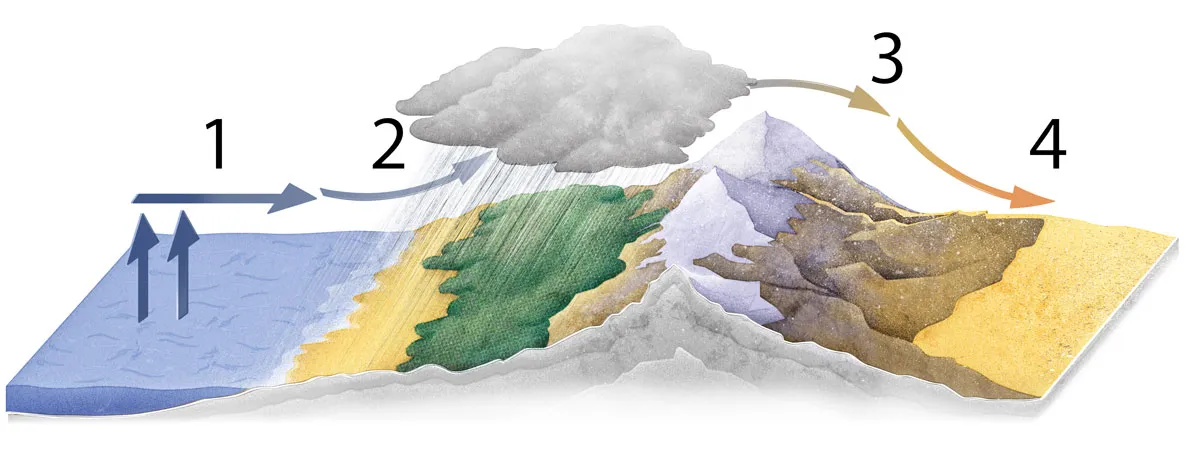Mountain ranges can create deserts by preventing moist air from reaching certain areas. Known as the ‘rain shadow’ effect, this phenomenon has played a part in the formation of many arid landscapes, including the Mojave, Gobi and Atacama deserts.

1. Evaporation
Warmed by the Sun, water evaporates from oceans and other bodies of water, entering the atmosphere as water vapour and forming clouds. This warm, moist air is swept inland by winds.
2. Upwards winds
If the prevailing wind passes through a mountain range, warm, moist air is forced upwards. As it rises, it expands and cools. As colder air is not able to carry as much moisture, the water condenses out, falling as rain or snow. This is known as orographic precipitation, and typically supports lush vegetation on the upwind side of the mountain.
3. Warm air descends
Stripped of moisture, the cool, dry air passes across to the other side of the mountain range, warming up again as it descends. On this side of the range, the lack of moisture prevents cloud formation, creating a dry area commonly called a ‘rain shadow’.
4. Low humidity
A region is officially classified as a desert when rainfall is under 250mm per year. Without vegetation, any soil or organic matter is swept away by winds, often leaving behind sand and rocks. Low humidity also means it can get extremely hot when the Sun is shining, but very cold at night.
Read more:
- The thought experiment: How could I survive being washed up on a desert island?
- What propels the ‘sailing stones’ across the Californian desert?
- On a desert island, would it be better to drink wine or go thirsty?
- What are the 10 coldest places on Earth?
To submit your questions email us at questions@sciencefocus.com (don't forget to include your name and location)